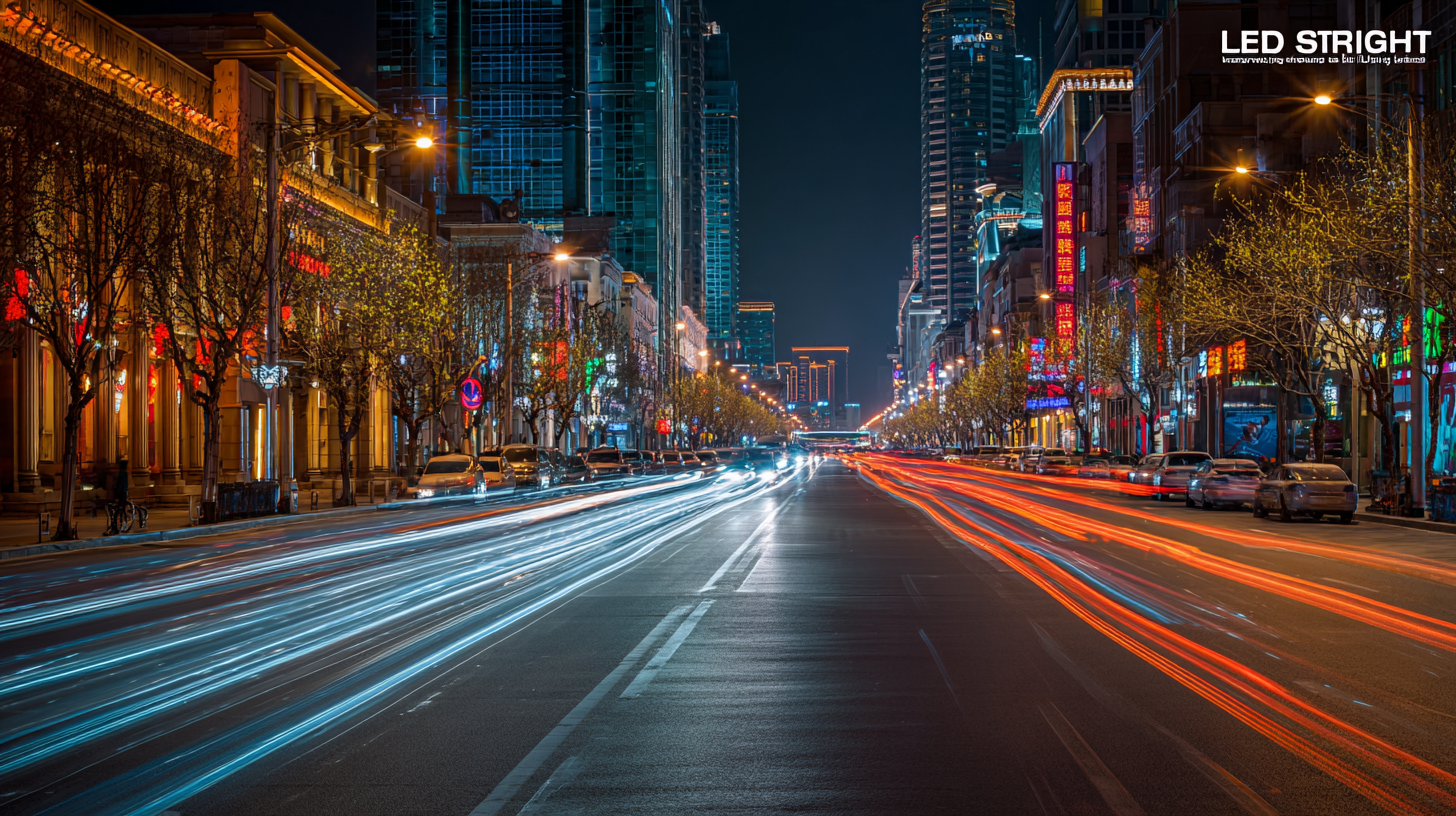What is the Future of Urban Lighting? Exploring the Best LED Street Lights for Global Investors
As urban areas continue to evolve, the importance of efficient and sustainable lighting solutions has never been more critical. One of the most promising advancements in this field is the adoption of LED street lights, which not only enhance safety and visibility but also significantly reduce energy consumption and maintenance costs. This blog will delve into the future of urban lighting, focusing on the challenges and innovations surrounding LED street lights. We will explore the impact these technologies have on cityscapes and their potential as a lucrative investment opportunity for global stakeholders. By addressing the common problems associated with traditional street lighting, we aim to highlight how LED street lights can pave the way for smarter, greener cities while attracting investors looking for sustainable solutions in urban development.

The Evolution of Urban Lighting: A Look Ahead to 2025
The urban lighting landscape is poised for significant transformation by 2025, driven largely by advancements in LED technology and increasing environmental awareness. According to a report by Research and Markets, the global LED street lighting market is projected to reach $10 billion by 2025, growing at a CAGR of 12% from 2020. This growth underscores the shift from traditional lighting solutions to energy-efficient LED alternatives, which not only reduce energy consumption by up to 50% but also enhance public safety and aesthetics in urban environments.
As cities adapt to these emerging technologies, we can expect further innovations that integrate smart city concepts into urban lighting. The International Energy Agency reports that smart lighting systems, which can adjust brightness based on real-time data and pedestrian activity, can lead to an additional 30% reduction in energy usage. This evolution in urban lighting is not just limited to operational efficiencies but also aligns with sustainability goals, as cities worldwide strive to reduce their carbon footprints. With the rise of global investors focusing on environmentally responsible technologies, the future of urban lighting is not only bright but increasingly green.
What is the Future of Urban Lighting? Exploring the Best LED Street Lights for Global Investors
| Aspect | Current Trends | Future Predictions (2025) |
|---|---|---|
| Technology | Smart LED technology, IoT integration | Advanced AI and machine learning for real-time adjustments |
| Energy Efficiency | Significant reduction in energy consumption | Expected 50% reduction in energy use compared to traditional lighting |
| Sustainability | Focus on reducing carbon footprint | Implementation of solar-powered street lights |
| Design | Minimalist and functional designs in urban settings | Integration of art and technology in lighting design |
| Control Systems | Centralized control systems for monitoring | Decentralized smart grids with autonomous features |
| Connectivity | Wi-Fi enabled street lights | Enhanced connectivity for smart cities, linking to public services |
Key Technological Innovations in LED Street Lighting
As cities continue to evolve, urban lighting stands at the forefront of technological innovation, particularly with the advent of LED street lights. These advanced lighting systems offer a range of improvements over traditional street lighting, making them essential for global investors looking to tap into the future of urban infrastructure. Key innovations in LED technology include adaptive lighting systems that adjust brightness based on real-time needs, enhancing both energy efficiency and public safety. This responsiveness not only reduces energy consumption but also minimizes light pollution, addressing growing concerns over environmental sustainability in urban areas.
Another significant advancement is the integration of smart technology into LED street lights. These systems can be equipped with sensors and IoT capabilities that enable remote monitoring and management. This connectivity allows for data collection on traffic patterns, pedestrian activity, and environmental conditions, fostering smarter urban planning and responsive city management. By leveraging these innovations, investors have the opportunity to play a crucial role in reshaping the urban landscape, driving not only economic returns but also contributing to the overall improvement of urban living environments.
Sustainability on the Streets: The Environmental Impact of LED Technology
The future of urban lighting is increasingly intertwined with sustainability, particularly through the adoption of LED technology. These energy-efficient lights significantly reduce carbon emissions compared to traditional streetlights, making them a vital component in cities' efforts to combat climate change.
As urban areas expand and energy costs rise, local authorities are exploring smart interoperable lighting solutions that not only improve illumination but also enhance infrastructure connectivity. This evolution paves the way for a more sustainable urban environment, where lighting can adapt to real-time needs while minimizing ecological footprints.
Recent initiatives demonstrate the growing shift towards innovative street lighting solutions. For instance, the implementation of solar street lights is witnessing remarkable growth worldwide, projected to reach significant market values in the coming years. This spiral toward greener technologies reflects a broader trend of cities aiming for sustainable infrastructure, while programs aimed at rural road construction highlight the environmental benefits of using eco-friendly methods. As communities prioritize sustainable development, the transformation of urban lighting stands out as a leading example of how technology can drive environmental responsibility on our streets.
Investment Opportunities in LED Street Light Markets for Global Stakeholders
As the demand for sustainable solutions grows globally, the LED street light market presents lucrative investment opportunities for stakeholders. According to a report by MarketsandMarkets, the global LED street lighting market is projected to reach USD 15.5 billion by 2025, growing at a CAGR of 11.3% from 2020. This growth is bolstered by urbanization trends, with the United Nations estimating that 68% of the world’s population will live in urban areas by 2050, driving the need for energy-efficient street lighting systems.

Moreover, as countries focus on reducing greenhouse gas emissions, LED street lights are becoming an essential part of smart city initiatives. The International Energy Agency (IEA) reports that LED street lights can save up to 50% of energy compared to traditional lighting. Additionally, various financing models, including public-private partnerships, are emerging, providing attractive returns for global investors. With advancements in Internet of Things (IoT) technology facilitating smart lighting solutions, investors who align with these technological trends and sustainability goals stand to reap significant benefits in this dynamic marketplace.
Smart Lighting Solutions: Integrating IoT with LED Street Lighting Systems
The integration of IoT (Internet of Things) with LED street lighting systems marks a transformative shift in urban infrastructure. According to a report by ResearchAndMarkets, smart lighting solutions are projected to grow at a CAGR of 24% from 2023 to 2030. This remarkable growth is driven by the need for energy-efficient and adaptive lighting systems that can adjust to real-time conditions, ultimately reducing energy consumption by up to 60%.
Implementing smart lighting not only enhances street visibility and safety but also provides cities with valuable data insights. By using sensors that monitor pedestrian and vehicular traffic, cities can optimize lighting based on actual usage, thus avoiding unnecessary energy expenditure. Moreover, systems equipped with IoT can facilitate remote monitoring and management, allowing for timely maintenance alerts when issues arise, which can extend the lifespan of LED fixtures.
**Tip:** When considering the transition to smart LED street lights, municipalities should evaluate platforms that offer interoperability with existing systems. This ensures that future upgrades are seamless and cost-effective. Additionally, investing in systems with advanced analytics capabilities can pave the way for smarter urban management and improved citizen engagement.

